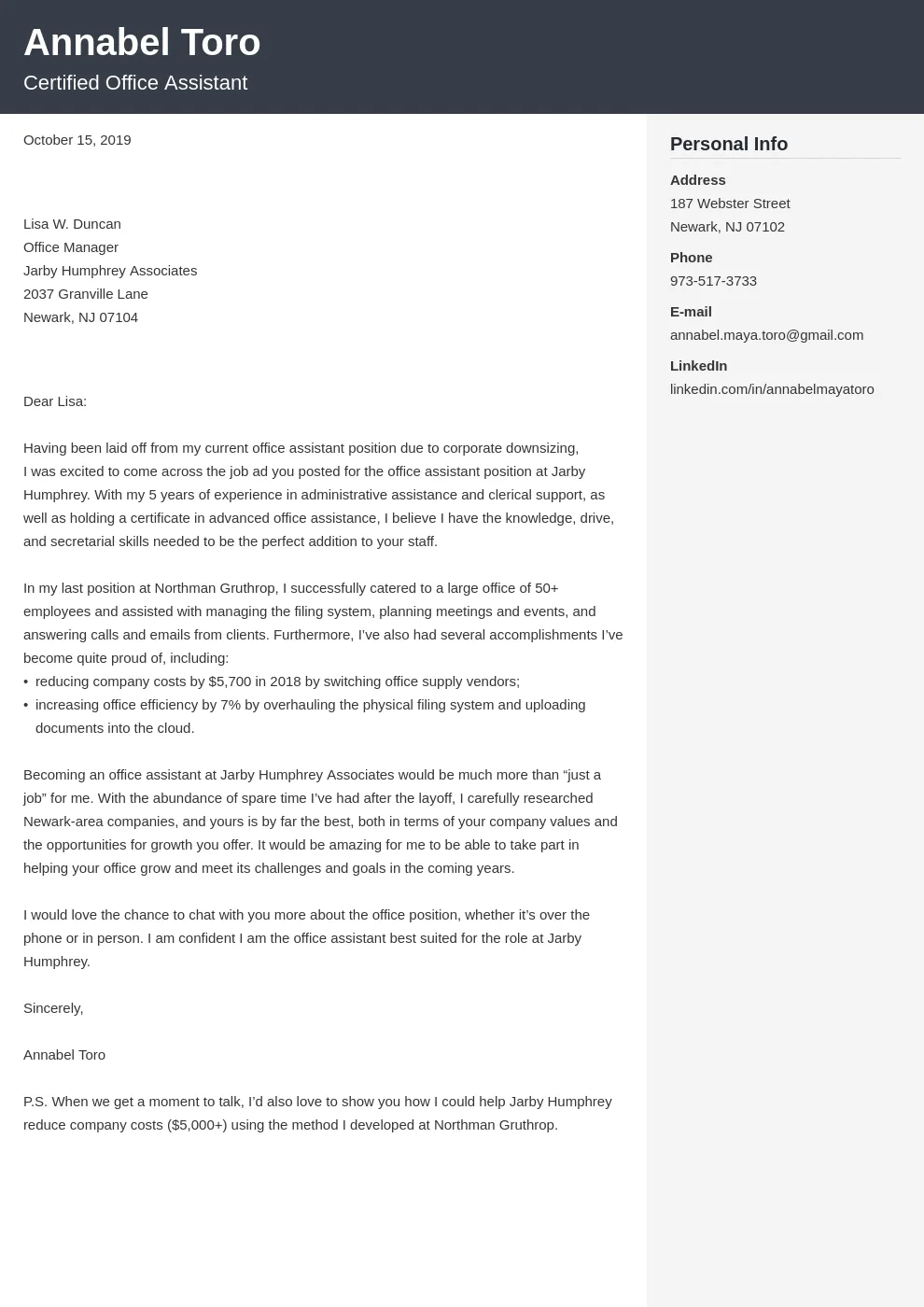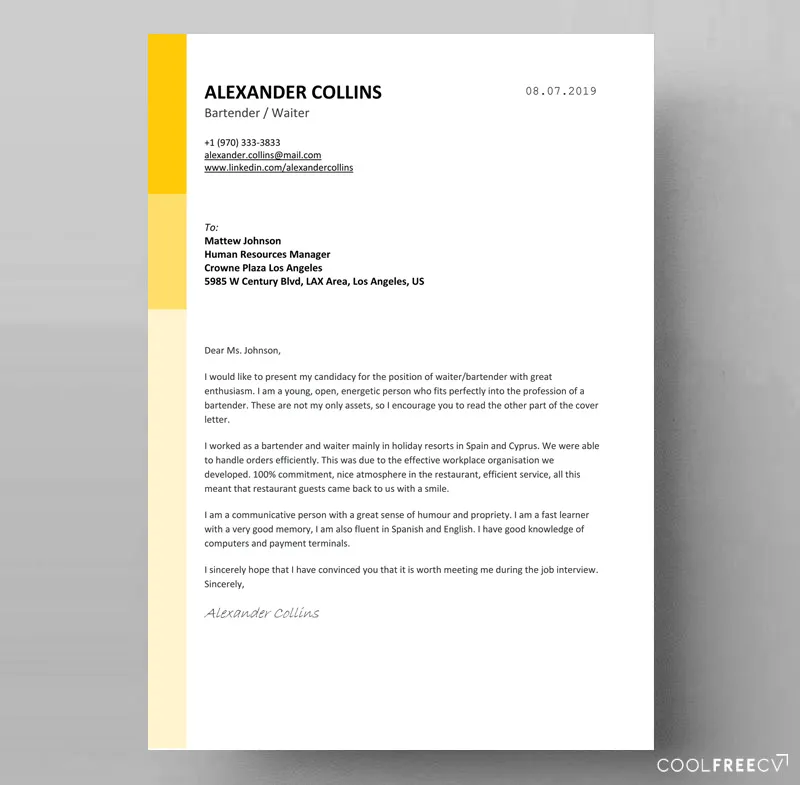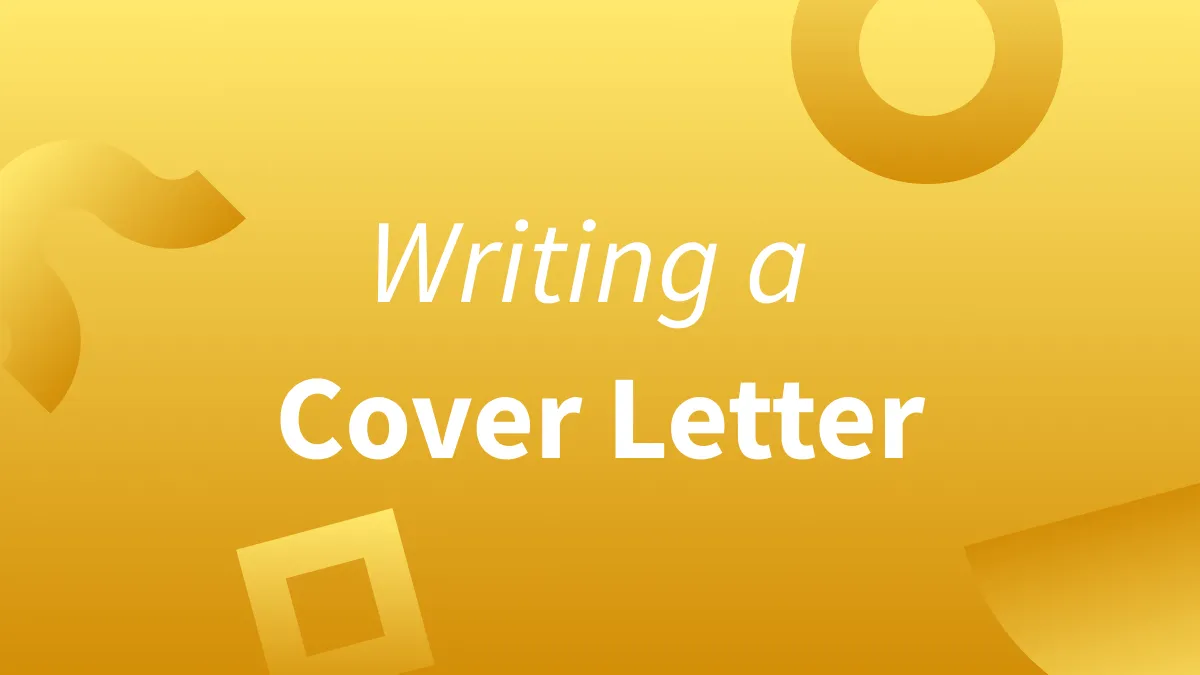Why a Cover Letter Still Matters
In an age of digital applications and automated resume screenings, you might wonder if a cover letter is still relevant. The answer is a resounding yes. A well-crafted cover letter is your first impression, a chance to make a personal connection with a potential employer. It allows you to go beyond the bullet points of your resume and tell a story about your qualifications, passion, and why you’re the perfect fit for the role. A cover letter is an opportunity to express your enthusiasm for the specific job and company, making you stand out from the crowd of applicants. Furthermore, it shows your communication skills, an important factor in today’s work environment.
Crafting a Compelling Cover Letter Headline
Before diving into the body of your cover letter, consider the importance of a strong headline. While not a formal element, a compelling headline can immediately grab the reader’s attention and set the tone for your application. It should be concise, highlighting your most relevant skill or achievement in relation to the job description. Avoid generic phrases; instead, personalize it to reflect the specific role and company. You can also incorporate a brief, engaging statement of your value proposition. Think of it as a mini-elevator pitch – a quick snapshot of what you bring to the table. A great headline can significantly boost your chances of getting your cover letter read and reviewed.
Understanding the Basics of Cover Letter Formatting

Proper formatting is crucial for a professional and readable cover letter. Use a standard, easy-to-read font like Times New Roman, Arial, or Calibri, with a font size between 10 and 12 points. Ensure consistent spacing throughout the document, typically single-spaced within paragraphs and double-spaced between paragraphs. Maintain a one-inch margin on all sides. Align your text to the left, avoiding justification, which can create awkward spacing. Keep the letter concise, ideally within one page. Break up large blocks of text into shorter paragraphs to improve readability. These formatting elements contribute to a polished and professional presentation, making it easy for the hiring manager to focus on your qualifications.
Essential Sections of a Cover Letter
A well-structured cover letter typically includes several key sections. Start with your contact information, including your name, address, phone number, and email address. Then, include the date and the hiring manager’s name and title. The opening paragraph should grab the reader’s attention and state the position you’re applying for. Body paragraphs should highlight your relevant skills, experience, and accomplishments, providing specific examples to support your claims. The closing paragraph should reiterate your interest and include a clear call to action, such as requesting an interview. Each section plays a vital role in presenting you as a well-suited candidate.
Contact Information
Begin your cover letter by including your full name, address, phone number, and professional email address. This information should be clearly displayed at the top of the letter. Make sure your email address is professional and appropriate. Consider using a combination of your first and last names or initials. This section is critical for the hiring manager to quickly and easily contact you if they are interested in your application. Ensure all information is accurate and up-to-date, as even a small error can cause you to miss an opportunity. Always double-check for accuracy before submitting your letter.
Opening Paragraph: Grabbing Attention

The opening paragraph sets the tone for your entire cover letter, making it critical to grab the reader’s attention immediately. State the specific position you are applying for and where you found the job posting. Briefly mention your most compelling qualification or the specific aspect of the role that excites you. Avoid generic opening lines. Instead, tailor your introduction to reflect your understanding of the company and the position. Demonstrate enthusiasm and genuine interest. Aim to make the reader want to learn more about you. The opening paragraph is your chance to make a great first impression and motivate the hiring manager to continue reading your letter.
Body Paragraphs: Highlighting Your Value
The body paragraphs are the heart of your cover letter, where you demonstrate how your skills and experience align with the job requirements. Focus on the key qualifications mentioned in the job description, providing specific examples of your accomplishments. Structure your paragraphs logically, using the STAR method (Situation, Task, Action, Result) to showcase your skills in action. Use action verbs to describe your contributions and quantify your achievements whenever possible. Tailor your examples to each specific job application. Highlight your unique selling points, emphasizing what makes you stand out from other candidates. Make sure the paragraphs are easy to read and understand.
Showcasing Relevant Skills
Carefully review the job description and identify the key skills the employer is seeking. Then, in your body paragraphs, showcase how your skills match those requirements. Provide concrete examples of how you’ve used these skills in previous roles or projects. Don’t just list your skills; demonstrate them through your experiences. For instance, if the job requires strong communication skills, describe a situation where you successfully communicated complex information to a diverse audience. Use the job description as a roadmap, ensuring you address the skills and requirements most relevant to the role. This targeted approach will make your letter more compelling and highlight your value to the employer.
Quantifying Your Accomplishments

Whenever possible, quantify your accomplishments to demonstrate the impact of your work. Use numbers, percentages, and data to provide concrete evidence of your achievements. For example, instead of saying, ‘Managed social media campaigns,’ say, ‘Increased social media engagement by 30% within six months.’ Quantifying your accomplishments adds credibility to your claims and makes it easier for the hiring manager to see the value you would bring to the company. Focus on results and outcomes. Data-driven achievements show that you are a results-oriented individual. This makes your cover letter more compelling and persuasive.
Closing Paragraph: Call to Action
Your closing paragraph should summarize your interest in the position and the company. Reiterate your enthusiasm for the opportunity and briefly restate your key qualifications. Include a clear call to action, such as requesting an interview or expressing your availability for a follow-up call. Thank the hiring manager for their time and consideration. Maintain a professional and positive tone throughout. Proofread your closing paragraph carefully to ensure it is free of errors and reflects your genuine interest in the position and the organization. A strong closing leaves a lasting positive impression.
Cover Letter Language: What to Use and Avoid
The language you use in your cover letter is crucial. Use professional and respectful language throughout. Avoid slang, jargon, and overly casual tones. Tailor your language to the specific company and industry. Use strong action verbs to describe your accomplishments. For instance, instead of ‘responsible for,’ use ‘managed,’ ’led,’ or ‘implemented.’ Be clear and concise. Avoid using clichés or generic phrases. Focus on the value you bring to the employer and use a positive and enthusiastic tone. Proofread carefully to ensure your language is free of errors and reflects your professional skills and abilities. This meticulous approach enhances your credibility.
Action Verbs to Use in Your Cover Letter

Using strong action verbs is key to making your cover letter dynamic and engaging. Action verbs demonstrate your accomplishments and show how you have contributed in previous roles. Examples include ‘achieved,’ ‘managed,’ ’led,’ ‘developed,’ ‘implemented,’ ‘created,’ ‘improved,’ ‘increased,’ ‘streamlined,’ ‘collaborated,’ and ’negotiated.’ Using a variety of action verbs can avoid repetition and showcase the range of your skills. Refer to job descriptions to identify the key requirements, then use action verbs that effectively illustrate your experience in these areas. Choosing the right action verbs can dramatically improve the impact of your cover letter.
Common Mistakes to Avoid
Several common mistakes can undermine your cover letter. Avoid using a generic cover letter that isn’t tailored to the specific job or company. Grammatical errors, typos, and poor formatting are major red flags. Don’t simply rehash your resume; use your cover letter to expand on your experiences and showcase your personality. Avoid being too long or using a negative tone. Never lie or exaggerate your qualifications. Failure to proofread is a common mistake that can lead to negative perceptions. Carefully proofread your cover letter for any mistakes. Paying attention to these details ensures a strong and professional application that increases your chances of success.
Proofreading and Editing Your Cover Letter
Proofreading and editing are essential steps in crafting a compelling cover letter. Always proofread your cover letter carefully for any grammatical errors, typos, or formatting inconsistencies. Check for clarity, conciseness, and proper word choice. Read your letter aloud to catch awkward phrasing or sentences. Get a second pair of eyes to review your cover letter. Ask a friend, family member, or career advisor to proofread it for you. A fresh perspective can often identify errors that you may have overlooked. Proofreading is critical in ensuring your application reflects professionalism and attention to detail. It significantly enhances your credibility and increases your chances of being selected for an interview.
